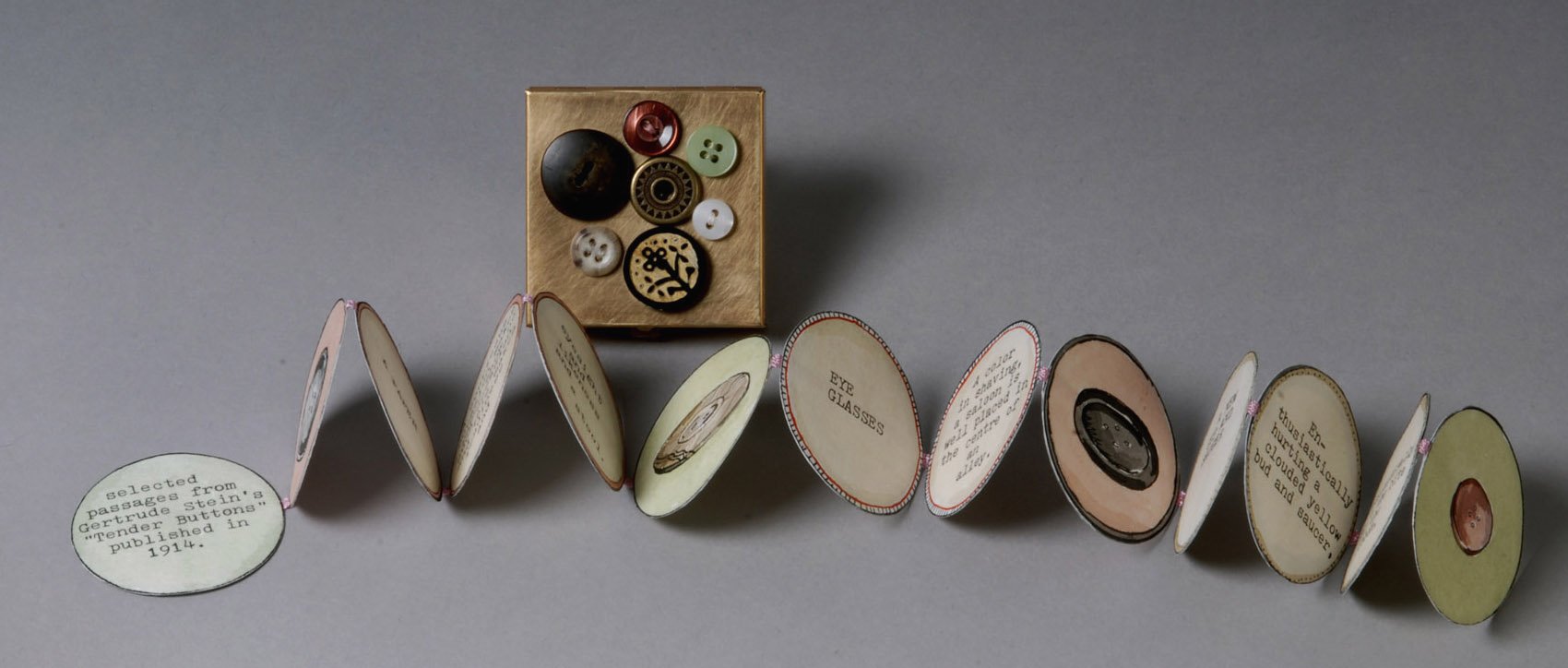From ‘Tender Buttons’ to ‘Women and Animals’
Elissa Watters curated the Brattleboro Museum & Art Center (BMAC) exhibit Natalie Frank: Painting with Paper (October 23, 2021 - February 13, 2022) and the upcoming exhibit Louisa Chase: Fantasy Worlds (March 12 - June 12, 2022).
Watters served as a guest curator at the Williams College Museum of Art and as the Florence B. Selden Fellow in the Department of Prints and Drawings at the Yale University Art Gallery. She is a Ph.D. student in art history at the University of Southern California. She holds a B.A. from Dartmouth College and an M.A. in art history from Williams College and the Clark Art Institute.
Watters and BMAC Director of Exhibitions Sarah Freeman sat down recently to talk about the exhibits and Watters’ approach to curation. Presented here is Part 1 of that conversation, focusing on Natalie Frank. Part 2 will be published when the Louisa Chase exhibit opens in March.
Sarah Freeman: How did you first decide that you wanted to be a curator and an art historian?
Elissa Watters: I’ve always been artistically inclined. When I got to Dartmouth College, I really took advantage of the liberal arts experience, and I decided I wanted to be an English major. My first English class transformed the way I thought about what I wanted to do. On the first day of class, the syllabus said, ‘Read Gertrude Stein’s Tender Buttons.’ At the time, I had no idea what this was. I was frantically looking for it in Dartmouth’s libraries and discovered it in what turned out to be the rare books library.
I walk in, and they pull out this giant box, and inside I discover another box, and another box. Eventually I pull out this stack of tiny cardboard circles attached with ribbons that accordioned out, with one illustrated, decorated word on each side. I’m actually still not sure what it was—I think it was an artist book based on Tender Buttons. But in that moment, I knew I wanted to work with this type of thing. It was the coolest thing I’d ever seen. [Ed. note: We reached out to a reference librarian at Rauner Special Collections at Dartmouth who located the item for us: “Tender Buttons, tenderly,” Laura Davidson, 2007. You can find images of Davidson’s art book here.]
Laura Davidson, Tender Buttons, tenderly (2007), limited edition book
I did an art history minor at Dartmouth, and I started doing curatorial internships my sophomore year. One of my first internships was with Mara Williams at BMAC. I helped with the contemporary Chinese art show [Hot Pot: A Taste of Contemporary Chinese Art, 2013]. That was a really important experience for me. The opportunity to learn from Mara was incredible—it was so valuable.
I’ve just started a Ph.D. program in art history. My primary focus is modern European art, and my secondary focus is contemporary art. My underlying interest is works on paper across time and across place. The Natalie Frank show is right up my alley—I love her work with paper pulp. It’s drawing that verges on painting.
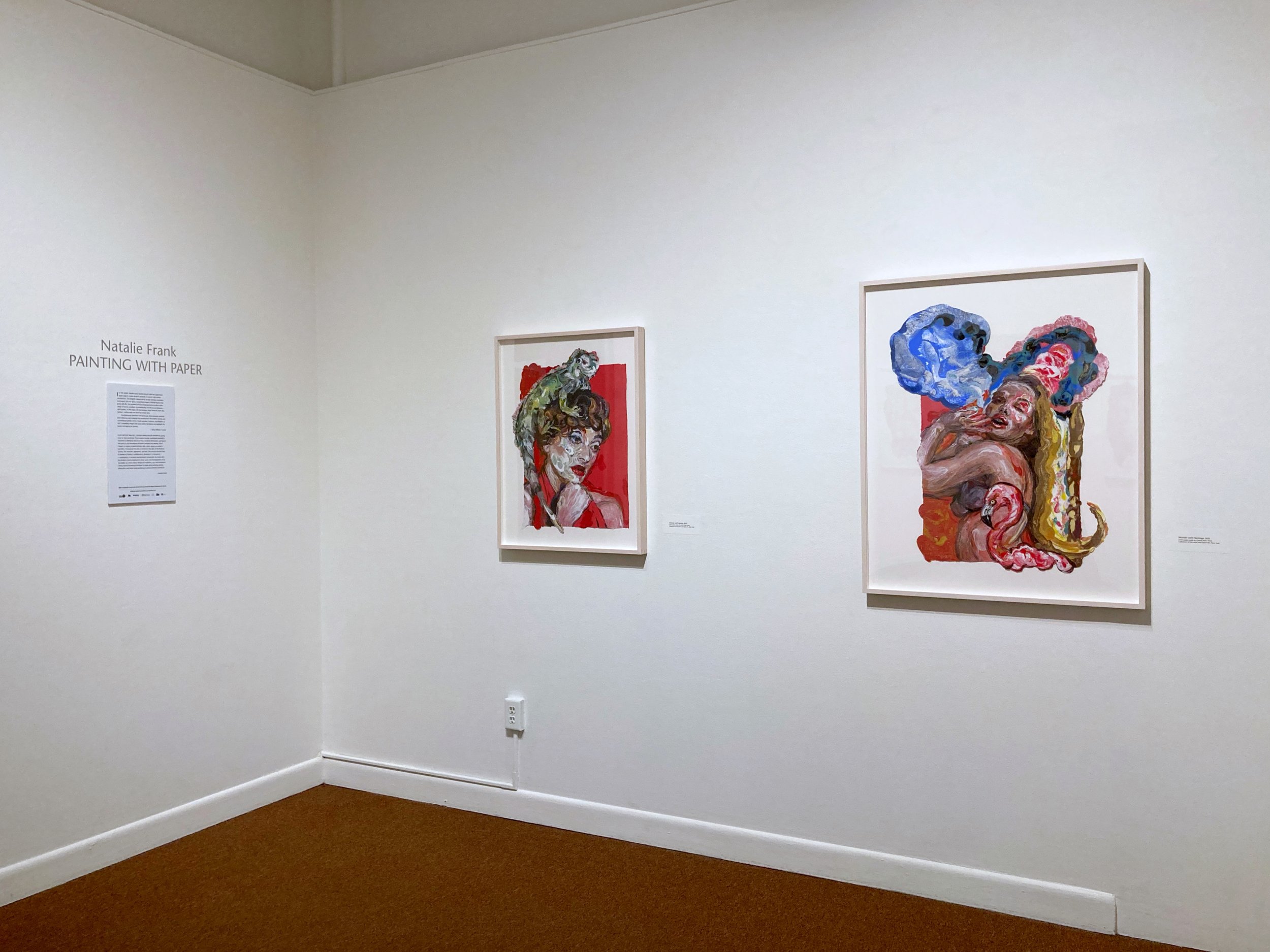

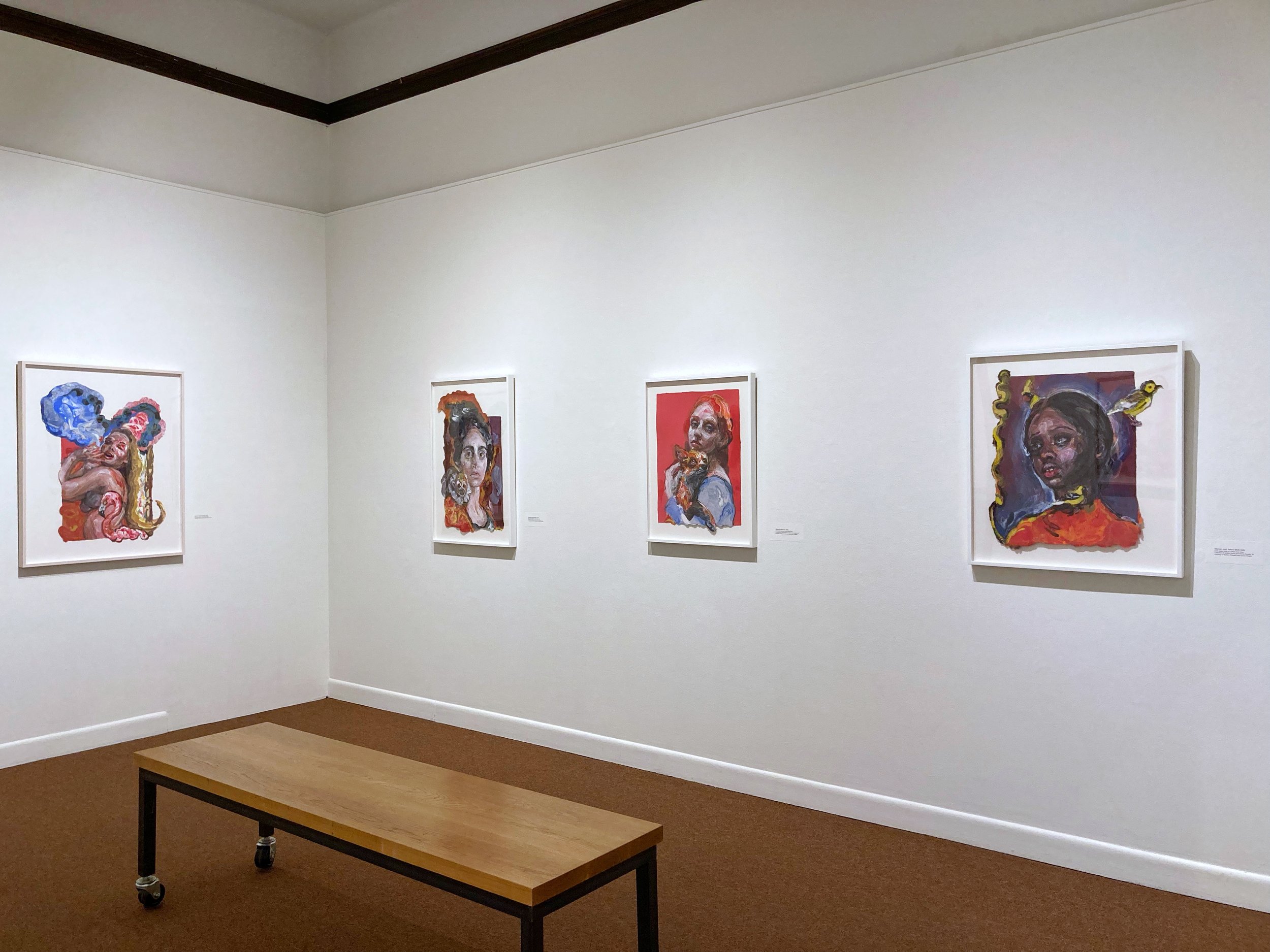
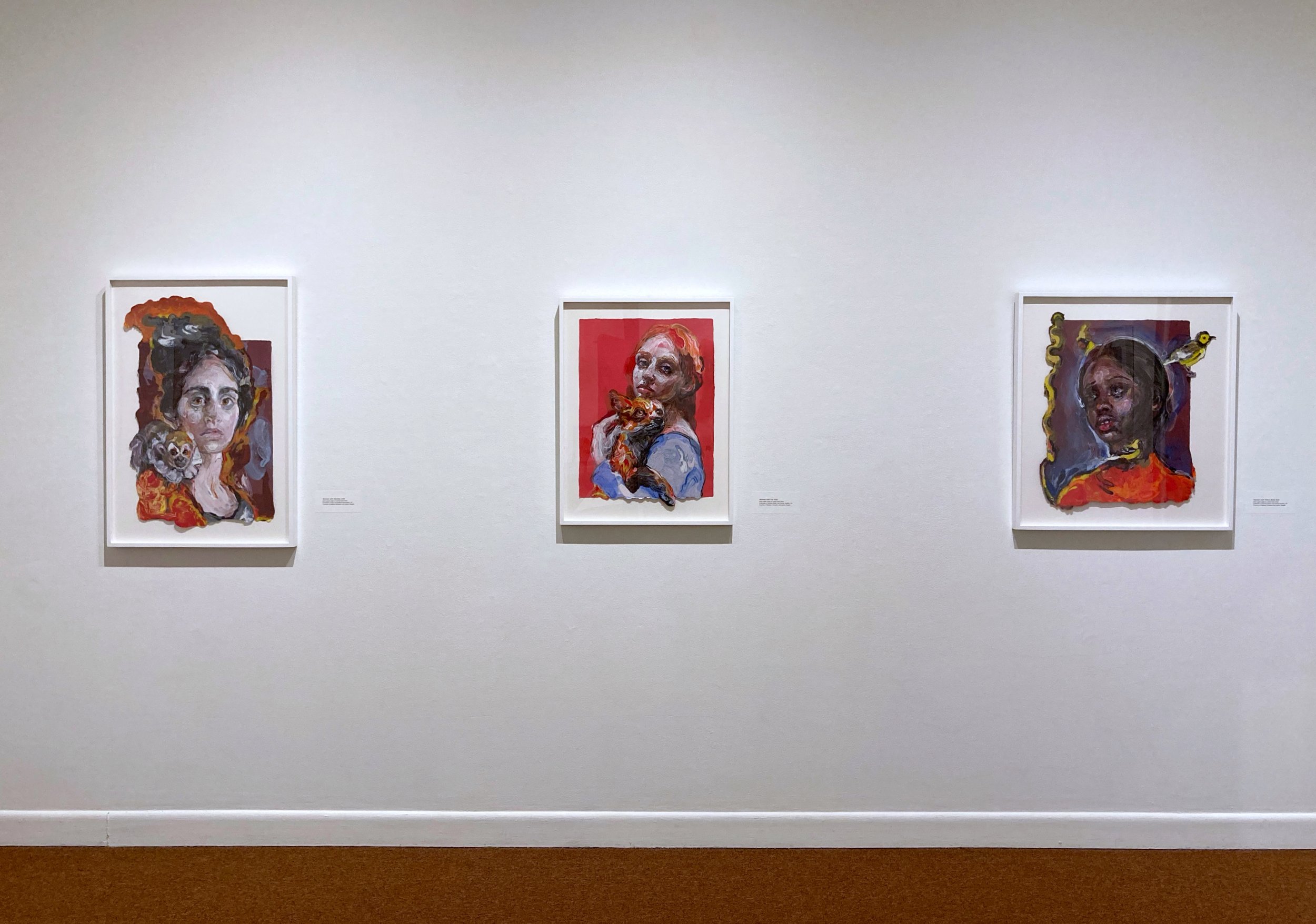
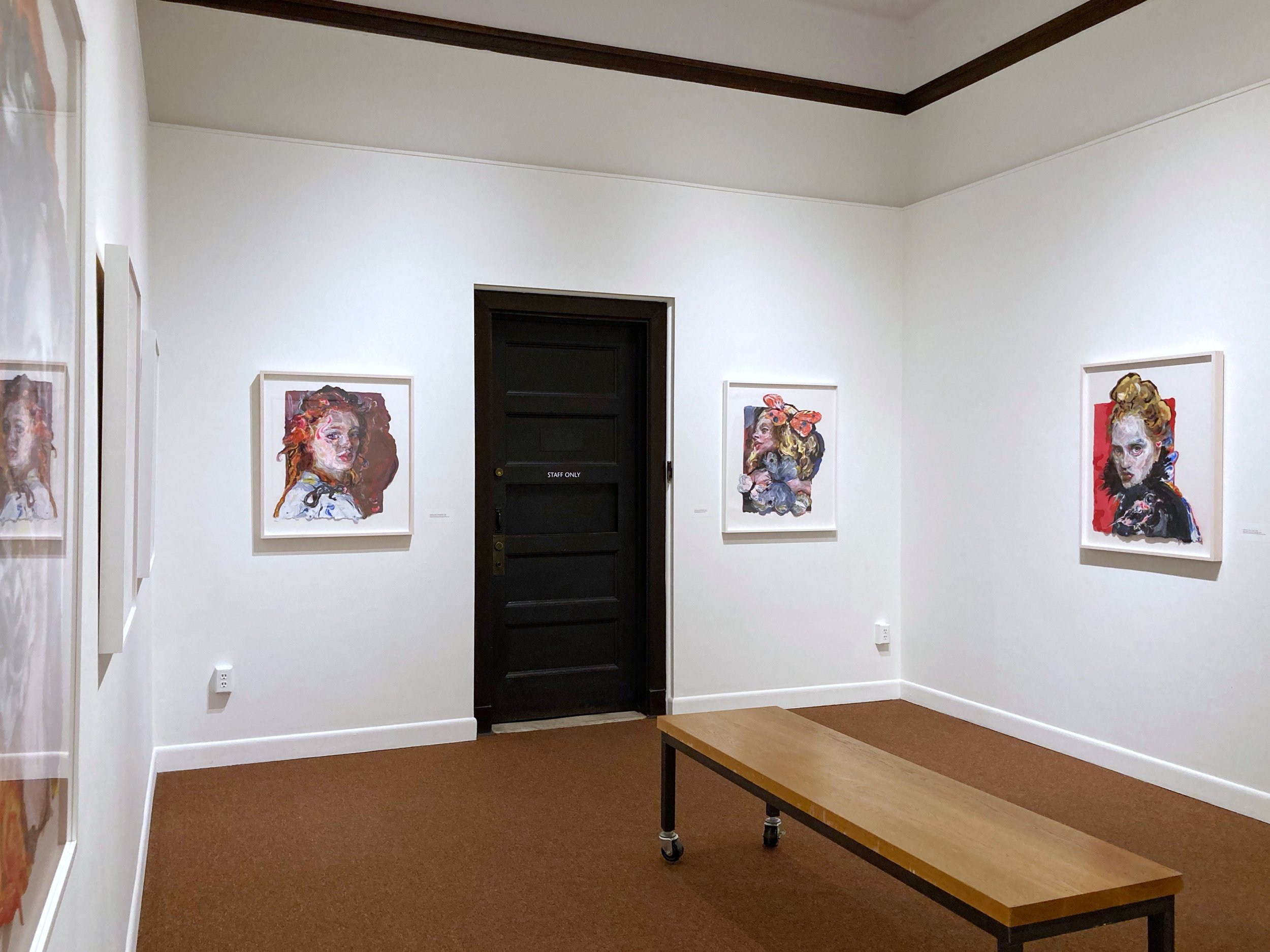


Freeman: How did you first get to know Natalie Frank’s work?
Watters: It was through my work on the Yale University Art Gallery exhibition On the Basis of Art: 150 Years of Women at Yale. As part of that project, I interviewed Natalie, and I visited her in New York and saw her work. She ended up talking about her new project, and I thought it would be an interesting project to bring to Brattleboro.
Freeman: When you first encountered her work at Yale, what sort of work were you looking at?
The Frog King, from Tales of the Brothers Grimm, illustrated by Natalie Frank
Watters: Yale has two pastel drawings of the Frog Prince from her series on the Grimm Brothers’ tales. They are amazing pieces. They’re very violent, and they’re very much about rape. That’s what first hooked me about Natalie: the way she’s engaging with stories that we know, but she’s going back to the originals, not the Disneyfied versions. It’s about how memory changes over time, and how these really gruesome tales, which were still intended for children, became these happy stories that we still tell children today. I was really interested in that work, not just in terms of the subject matter but also the color palette and the materials. Pastel is an ephemeral, delicate material, so she’s playing with delicacy, but also this really tough subject. That’s why I fell in love with Natalie Frank. A lot of her work has focused on this idea of past narratives that change over time. With the new pieces, I really want to talk to her about what kinds of histories she’s drawing on.
Freeman: What is it about works on paper that attracts you?
Natalie Frank, Woman with Crow (2020), linen paper pulp on cotton base sheet, 30.25 x 24.5 inches, collection of the artist and Salon 94, New York. © Natalie Frank
Watters: With Frank, it’s the process and the materials. I think it’s amazing what she’s able to do with pigment and paper pulp. It’s the texture, the tactility, how it plays off the subject matter. It’s interesting how the surface quality and texture and process relate to the content of the work.
Another thing that interests me is the accessibility of works on paper. They’re often less expensive, they’re sometimes produced in multiple, so they can circulate and be seen by more people.
I find myself drawn to artists who work in multiple media, including print. I like to see the correspondences between prints and drawings and other work they make.
Freeman: I know Natalie is a big fan of Paula Rego, a Portuguese-British painter. I’m so curious to hear how she’s inspired by Paula’s work, which I also love.
Watters: Paula Rego was fundamental to Natalie’s work with the Grimm Brothers. They actually met at the Yale Center for British Art, while Natalie was at Yale doing her undergraduate degree.
Freeman: What do you hope visitors will come away with after seeing Natalie Frank: Painting with Paper?
Watters: Natalie Frank’s work directly addresses the perception of women. I hope viewers think about how women have been traditionally represented and what it means. What representation of women is her work putting forward, especially by pairing women with animals? In many ways, she’s playing on a traditional perception of women as domestic but also as wild—yet at the same time, she’s challenging this perception. I hope visitors will also be asking what this work means in our current moment, especially around the #MeToo movement.
During my upcoming conversation with Natalie on January 20, I’m looking forward to talking about how she’s trying to break down those conceptions of women. I want to ask her what the pairing of women and animals represents for her, what past narratives she’s engaging with directly or indirectly, and how the process and materials play a role in the messages she’s trying to convey. I have my own ideas, but I want to hear hers.
RELATED EVENT
January 20, Thursday, 7 p.m. — Artist & Curator Conversation: Natalie Frank and Elissa Watters
RELATED RESOURCES
Installation shots — Natalie Frank: Painting with Paper
Ask the Artist!

